Northern Cardinal
(Cardinalis cardinalis)
The Northern Cardinal is one of the most distinctive birds found in backyards and has probably started more people bird watching than any other species. Its bright red plumage and cheery song can liven up any backyard. In winter, the contrast between the Cardinal and the dull browns of dormant trees and white snow is quite striking, making its image quite popular on Christmas cards.
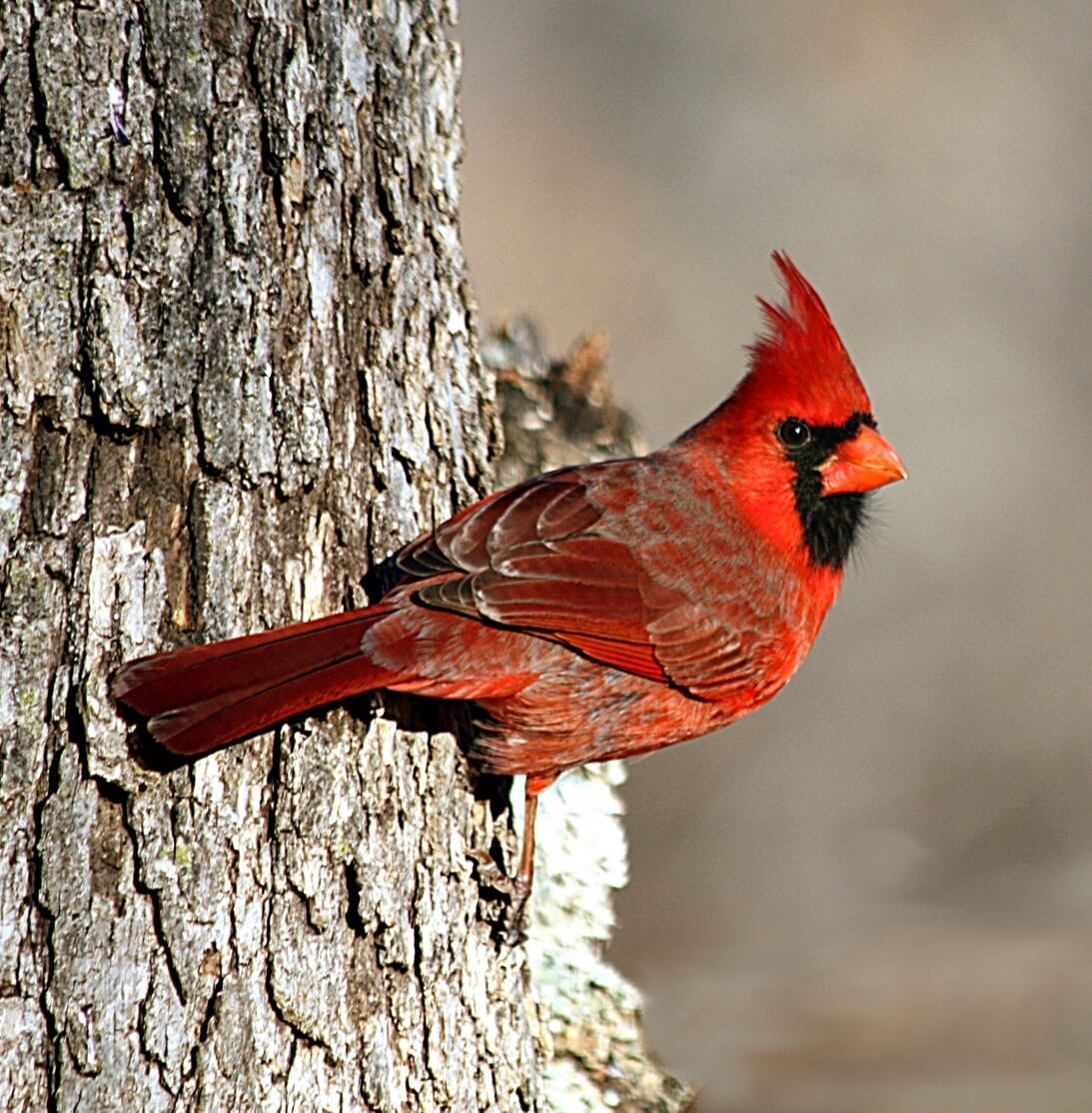
Size: return to top
- Length: 8.75 inches
- Wingspan: 11.0 inches
- Weight: 1.6 oz.
How To Identify: return to top
All Cardinals have a visible crest and a heavy-looking cone-shaped bill. The male is the only red bird in North America with a crest.
Male:
The male Cardinal is distinctive, being bright red overall with a black face, and a reddish or orange bill.
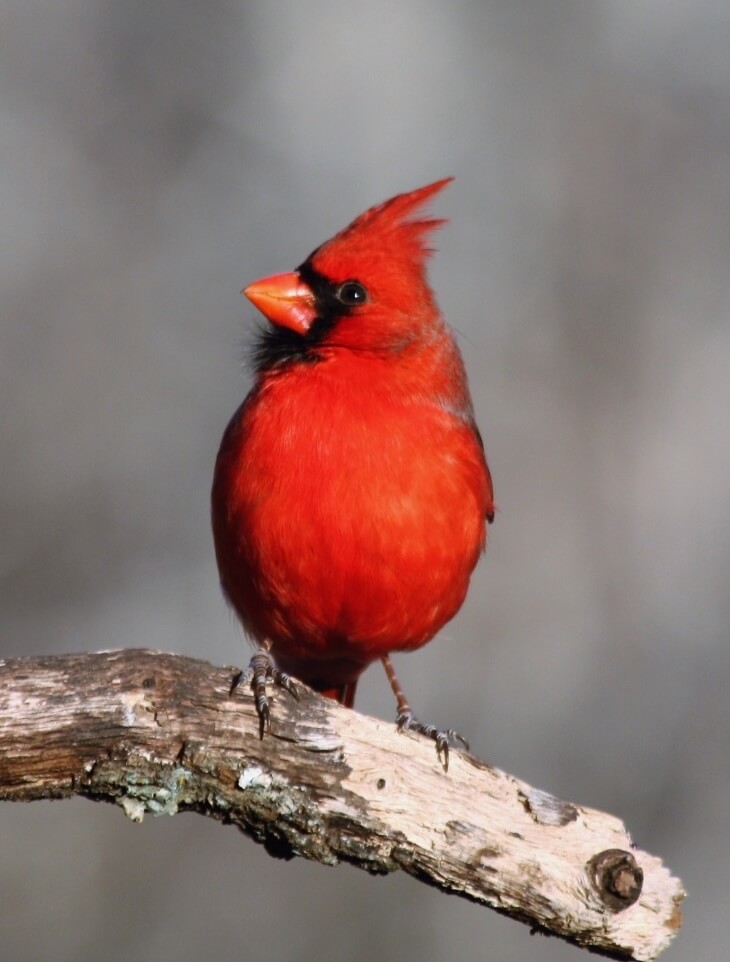
Female:
The female is buffy brown overall, with bits of red on her crest, wings, and tail. Her face is black, similar to the male, but is less pronounced. She, too, has a reddish bill like the male.
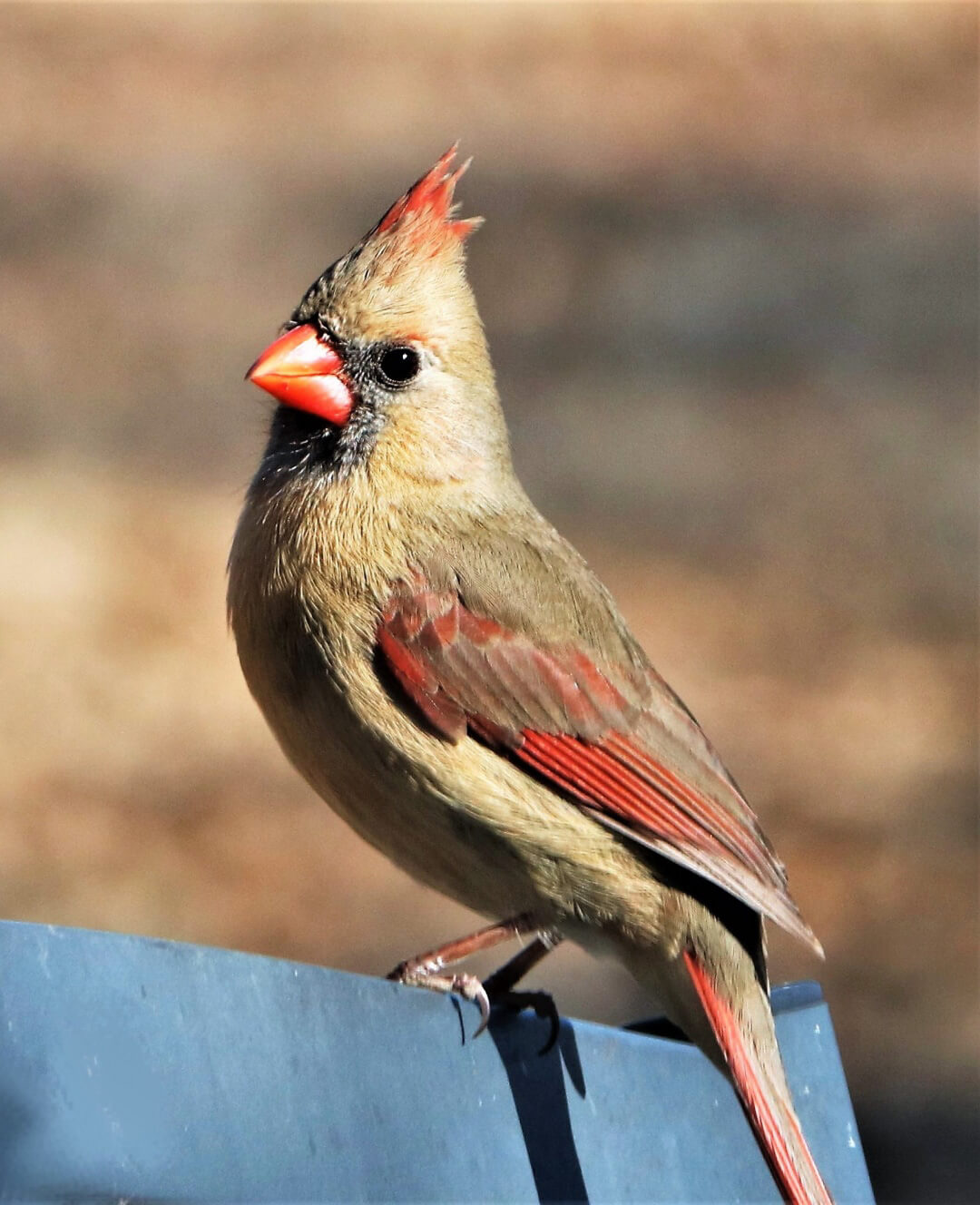
Juvenile:
The young cardinal resembles the female, but typically lacks the red highlights in crest, wings, and tail, and also lacks the black face. When the juvenile first leaves the nest, its bill is blackish, but as it ages the bill slowly changes to the reddish color of the adults. So, you might be able to see birds with intermediate colors.
Range Map: return to top
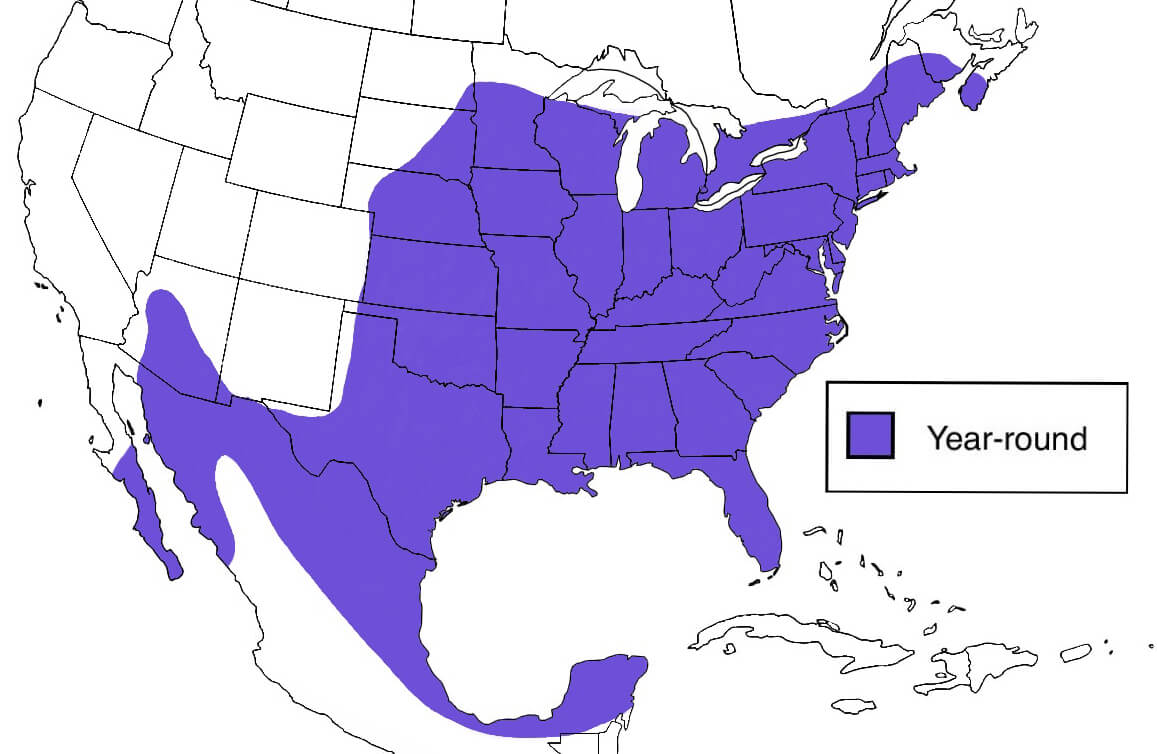
Similar Species: return to top
Pyrrhuloxia
The Pyrrhuloxia resembles female Cardinals, but has a different bill shape and lacks the black in the face. The conical bill (shown here) is similar to that of the Cardinal, but is stubbier and more rounded. The line between the upper and lower parts is angular, although this can be difficult to see in a wild bird.
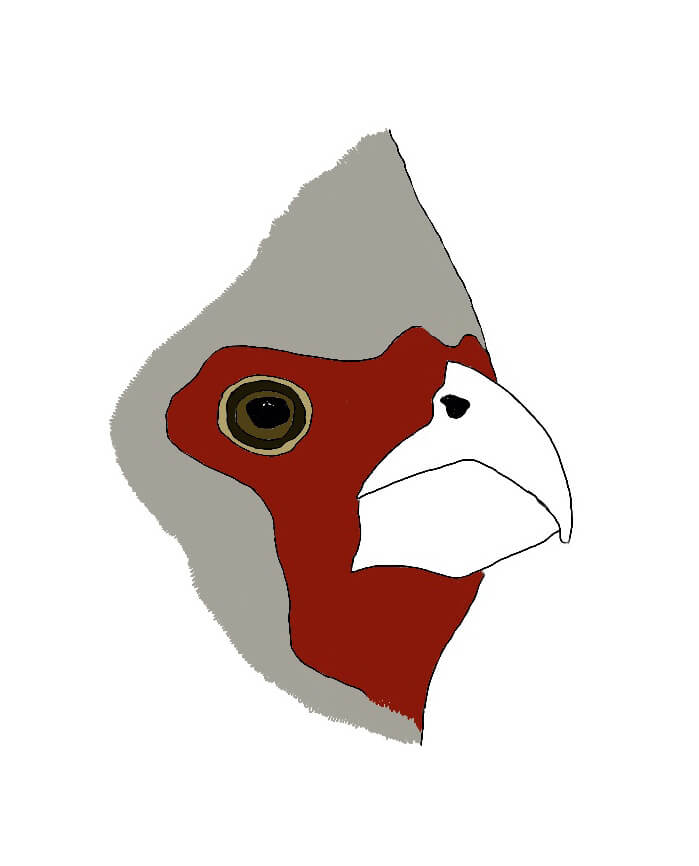 |
Summer Tanager
Summer Tanager males are solid red like male Cardinals, but lack the black face and crest. Also, the bill is quite different, being more pointed and less conical shaped, as shown below (Cardinal on left, Tanager on right).
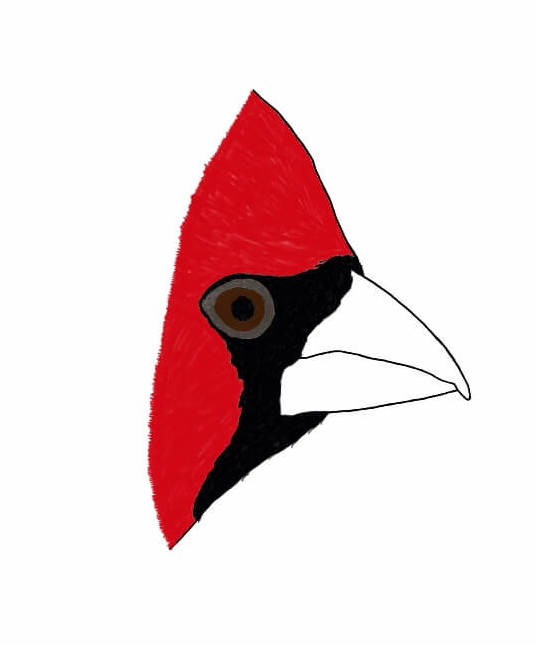 |
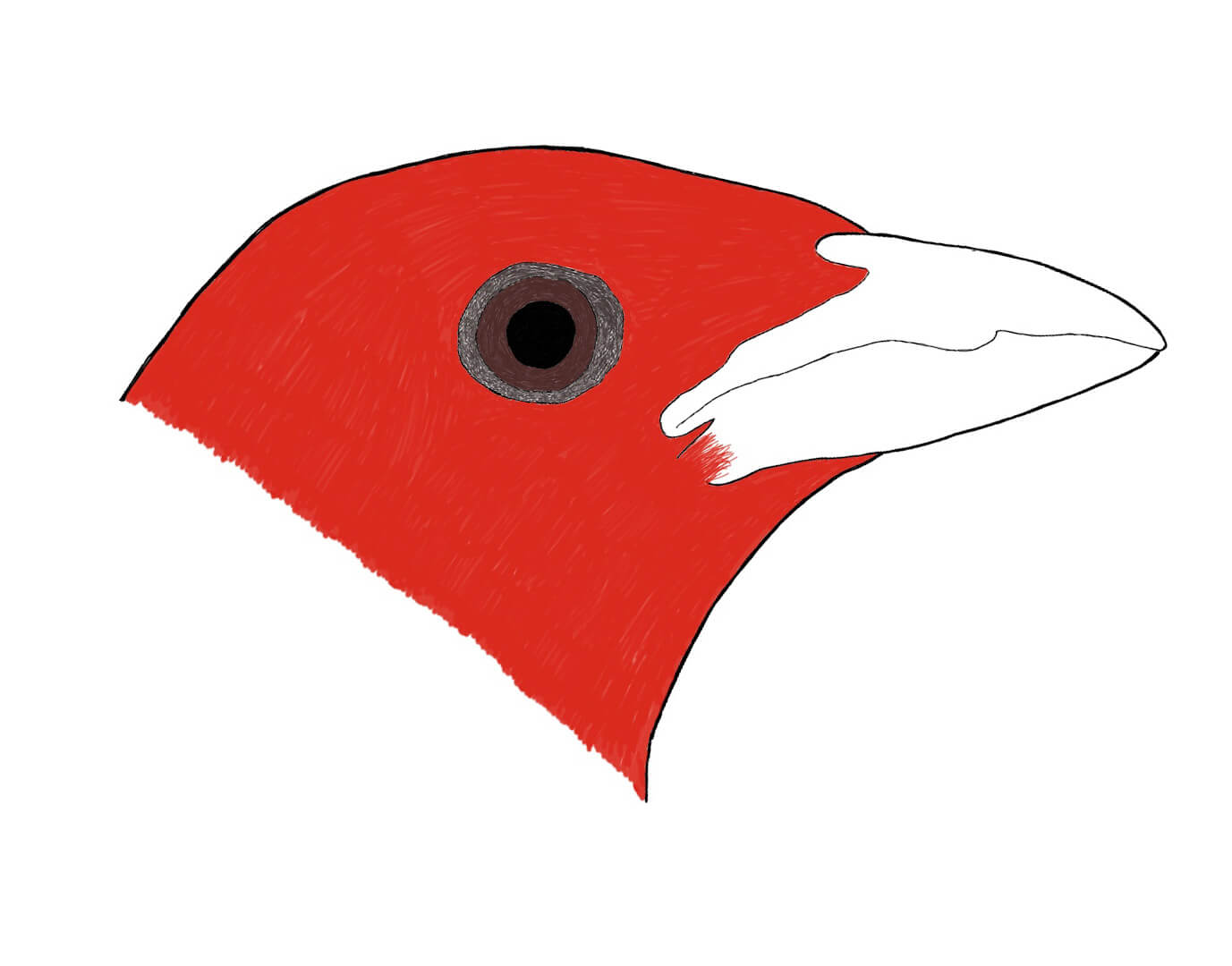 |
Scarlet Tanager
The Scarlet Tanager male has the same bright red body color as the male Cardinal, also lacking the black face and crest, but has solid black wings and a bill like that of the Summer Tanager shown above.
Habitat: return to top
Cardinals prefer somewhat open areas with some shrubs and trees, including forest edges, hedgerows, shrubby fields, backyards, parks and many ornamental landscapes.
Nesting: return to top
- Nest Type: open cup
- Nest Location: nests are placed in forks in shrubs, vines, and smaller trees; often hidden in denser foliage; 4-15 feet off the ground
- Clutch: 3-4 eggs (range of 2-5)
- Incubation Period: 11-13 days
- Nestling Period: 9-13 days
Diet: return to top
Cardinals eat a variety of seeds, fruit, and insects. Nestlings are fed primarily insects. At feeders, they show a preference for sunflower seeds.